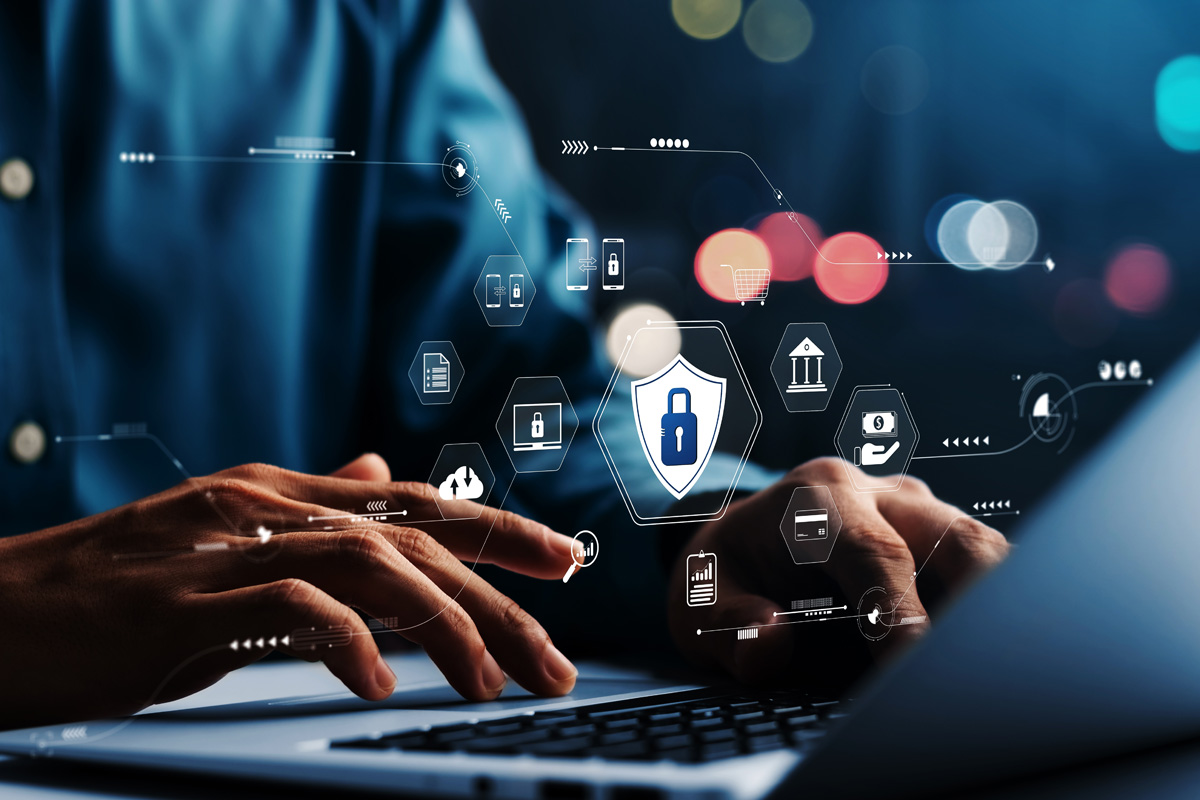Balancing Innovation and Security: Navigating the Intersection of Technology and Privacy
Introduction
In the swiftly advancing landscape of the 21st century, era has become an essential part of our each day lives. From smartphones that keep us related to smart domestic gadgets that enhance our comfort, the location of technology is apparent. However, with every soar in advance in era, a shadow looms over a vital right: privacy. As our dependence on generation deepens, the anxiety between innovation and privateness intensifies.
The phenomenon known as the privateness paradox exemplifies this warfare; on the same time as human beings revel in the blessings of technology, they regularly overlook the effects for their privateness. The series of personal records has come to be the cornerstone of many cutting-edge enhancements. Yet, as era advances, so too do the strategies hired to advantage and take a look at this statistics, foremost to capability invasions of privateness that could have a long way-accomplishing consequences.
This article goals to delve into the complicated courting among technology and privacy, exploring the historical context of generation, the results of growing improvements, the regulatory landscape, and the incredible practices for shielding privacy in a tech-pushed worldwide. By analyzing the ones aspects, we’re capable of better apprehend the manner to stability the advantages of generation with the vital to shield our privateness.
Section 1: The Evolution of Technology and Privacy
Historical Perspective
The courting among technology and privateness has developed dramatically over the last century. In the early twentieth century, technology emerge as quite simple, concerning number one mechanical gadgets collectively with typewriters and telephones. However, the invention of the cellular phone and the radio marked the begin of a brand new technology wherein personal conversation changed into an increasing number of difficulty to tracking. As technology advanced, the introduction of laptop structures in the latter half of of of the century revolutionized information storage and retrieval, primary to exquisite possibilities for each innovation and invasion of privateness.
The rise of the net within the Nineteen Nineties further complex the dynamics of era and privacy. With the capability to percentage widespread quantities of facts right now, individuals began out to alternate their privacy for comfort. Social media structures emerged, facilitating the alternate of private facts, frequently without clients really knowledge the outcomes. This generation marked the sunrise of the privacy paradox, wherein the attraction of generation frequently overshadowed the issues surrounding privacy.
The creation of mobile devices similarly converted the panorama of era and privateness. Smartphones, geared up with cameras, vicinity services, and constant net connectivity, have turn out to be crucial device for day by day lifestyles. While they offer exceptional comfort, in addition they allow widespread records series. Apps tune customer behavior, gather area statistics, and keep personal records, main to increased concerns about privateness. The constant presence of cellular generation has blurred the bounds amongst public and personal existence, prompting a re-assessment of methods privateness is notion and guarded.
The Privacy Paradox
The privacy paradox highlights the contradiction in purchaser conduct: at the equal time as people particular mission about their privacy, they maintain to have interaction with era that compromises it. This inconsistency can be attributed to various factors, together with the perceived advantages of generation and the often-complicated privacy policies which is probably difficult to recognize. Users also can overlook the extended-term implications of sharing non-public records, focusing as an alternative on on the spot income furnished by way of technology.
Moreover, the normalization of records sharing has added about a manner of existence wherein people may additionally furthermore unconsciously prioritize consolation over privateness. For instance, clients often willingly share their location information with apps in trade for services like navigation or eating place pointers, regardless of ability risks. This conduct underscores the need for extra focus and knowledge of the outcomes of information sharing in a tech-centric international.
Section 2: The Impact of Emerging Technologies
Artificial Intelligence and Privacy
Artificial Intelligence (AI) represents one of the maximum vast improvements in era. With its ability to investigate first rate portions of information, AI has the functionality to enhance patron reviews and streamline techniques. However, this capability also poses huge privacy risks. AI structures often require get right of entry to to non-public information to characteristic successfully, elevating problems about how this facts is gathered, saved, and used.
For example, facial recognition era is predicated on AI algorithms that might find out people from snap shots or movies. While this generation can beautify safety and streamline services, it may additionally cause unauthorized surveillance and a extremely good invasion of privacy. The project lies in balancing the blessings of AI with the need to shield humans’ privacy, necessitating sturdy policies and ethical issues.
One of the maximum critical issues surrounding AI is its functionality for bias, that may similarly complicate problems of privacy. If AI systems are professional on biased records, they may make selections that disproportionately have an impact on wonderful demographic corporations, important to moral and privateness dilemmas. This underscores the significance of transparency in AI development and implementation, further to the need for various statistics units that replicate a massive shape of reviews.
Big Data and Surveillance
The creation of big data has similarly complicated the relationship between generation and privateness. Organizations now have get right of entry to to substantial datasets, allowing them to research character behavior and alternatives on an exquisite scale. While this statistics can strain innovation and enhance services, it additionally raises serious privacy troubles.
Surveillance has come to be a byproduct of huge facts. Governments and corporations more and more display humans, amassing records with out their consent. The implications for privateness are profound, as human beings often stay unaware of the quantity to which their information is being accumulated and analyzed. This reality emphasizes the need for transparency in facts series practices and the established order of smooth limitations to defend person privacy.
For example, companies like Google and Facebook leverage big information analytics to create centered classified ads, frequently with out clients in reality information how their information is being applied. This focused method increases moral questions on informed consent and the functionality manipulation of consumer behavior. As huge statistics keeps to form the advertising landscape, people must be vigilant about their privacy and the data they percent.
Moreover, the rise of smart towns, which rent massive statistics to optimize metropolis infrastructure, offers both possibilities and stressful conditions. While those tasks can beautify efficiency and splendid of life, similarly they increase troubles about steady surveillance and information series. Striking the proper balance among innovation and privateness in clever town improvement is crucial to making sure that residents sense regular and ordinary in their environments.
The Internet of Things (IoT)
The Internet of Things (IoT) represents some other large improvement in era that has implications for privacy. With billions of interconnected devices, the IoT permits seamless communique amongst regular gadgets, developing smart environments. However, this connectivity furthermore will increase issues approximately facts protection and privacy.
IoT devices often accumulate enormous amounts of facts, from usage styles to private behavior. For instance, clever domestic devices can display while human beings are home or away, in all likelihood exposing them to safety dangers. The undertaking lies in making sure that these gadgets are designed with privacy in thoughts, allowing users to control their statistics whilst playing the blessings of era. Striking this stability is vital to fostering consider among customers and IoT carriers.
The loss of standardization in IoT safety is a big issue. Many gadgets are released with minimal safety capabilities, making them liable to hacking and unauthorized get right of entry to. This vulnerability can motive severe privacy breaches, as hackers can take gain of those devices to collect non-public facts or invade users’ houses. To mitigate those risks, producers want to prioritize privacy through imposing strong safety features and conducting thorough checking out in advance than liberating gadgets to the marketplace.
Furthermore, the aggregate of IoT devices in healthcare has raised extra privateness worries. Wearable gadgets that track fitness metrics can offer valuable insights, however in addition they collect touchy non-public information. Ensuring the safety of fitness facts is paramount to maintaining affected person consider and complying with hints together with the Health Insurance Portability and Accountability Act (HIPAA) inside the United States. Organizations ought to placed into effect stringent facts protection measures to defend touchy statistics at the same time as harnessing the capability of IoT in healthcare.
Section 3: Privacy Regulations and Legal Frameworks

Global Perspectives
As worries over privacy have grown, so too have efforts to installation policies governing data protection. The General Data Protection Regulation (GDPR) in Europe represents a landmark effort to enhance privacy rights. It imposes strict guidelines on how organizations accumulate, shop, and use personal facts, presenting human beings with greater manage over their privateness.
Under the GDPR, people have the proper to get proper of entry to their records, request corrections, and contact for the deletion of their information. Organizations are required to gather specific consent from customers in advance than processing their information, which has full-size implications for a manner agencies layout their facts collection practices. This law serves as a version for distinctive international locations looking for to bolster privacy protections in the digital age.
However, the global panorama is various, with top notch global places adopting diverse methods to privateness law. For example, the California Consumer Privacy Act (CCPA) offers comparable protections to the ones noted in the GDPR but is custom designed to the particular desires of California citizens. These regulations replicate the developing popularity of privateness as a fundamental right and the need for sturdy protections within the face of advancing generation.
Despite the established order of privateness suggestions, stressful conditions remain in ensuring compliance and enforcement. Some agencies may additionally struggle to enforce the essential adjustments to their information practices, main to ability violations of privateness rights. Furthermore, the pass-border nature of generation makes it tough to enforce pointers, as records regularly flows at some stage in jurisdictions with diverse privacy felony hints. This complexity underscores the want for worldwide cooperation and harmonization of privateness recommendations to successfully guard people’ rights.
Challenges in Implementation
Despite the status quo of privacy guidelines, companies often face challenges in imposing them efficaciously. Compliance with privacy jail hints calls for top notch belongings, and plenty of agencies warfare to balance regulatory requirements with the demands of innovation. Additionally, the unexpectedly evolving nature of era makes it difficult for guidelines to preserve tempo, ensuing in gaps that may be exploited.
Moreover, human beings may additionally furthermore stay ignorant of their rights below the ones pointers, proscribing their capability to advocate for his or her privacy. Education and consciousness campaigns are critical to empower humans to exercising their rights and keep agencies accountable for their statistics practices. As era continues to enhance, so too need to our expertise of privateness rights and the mechanisms in location to shield them.
To deal with those stressful conditions, corporations have to prioritize constructing a manner of lifestyles of privateness inside their operations. This includes education personnel on privacy extraordinary practices, conducting regular audits of records collection techniques, and fostering open verbal exchange about privateness issues. By embedding privacy issues into the organizational way of life, companies can enhance compliance and construct don’t forget with their customers.
Section 4: Best Practices for Technology and Privacy
Personal Responsibility
In a worldwide more and more fashioned by using way of way of technology, people should take responsibility for his or her privateness. Understanding the effects of facts sharing is critical for making informed alternatives approximately the generation we use. Here are a few exceptional practices humans can adopt to guard their privacy:
- Review Privacy Settings: Regularly test and update privacy settings on social media structures and gadgets to make sure maximum safety. Many structures offer granular controls that allow customers to limit data sharing with 1/3 activities.
- Limit Data Sharing: Be privy to the statistics shared on-line and with applications, presenting only the crucial information. When signing up for trendy services, bear in thoughts whether the blessings outweigh the capability privacy risks.
- Use Strong Passwords: Employ sturdy, unique passwords for precise debts to lessen the hazard of unauthorized get entry to. Password managers can help generate and keep complex passwords securely.
- Educate Yourself: Stay knowledgeable about privateness guidelines and information protection rights to recommend to your privateness efficiently. Understanding your rights under guidelines which consist of the GDPR or CCPA empowers you to make informed choices.
- Opt for Encrypted Services: Consider the usage of encrypted messaging structures and e-mail services that prioritize privacy. End-to-forestall encryption ensures that quality the meant recipients can get right of entry to your communications.
- Be Cautious with Public Wi-Fi: Avoid having access to sensitive records at the same time as linked to public Wi-Fi networks. Use a Virtual Private Network (VPN) to encrypt your internet connection and protect your records from prying eyes.
Organizational Strategies
Businesses moreover play a crucial feature in defensive privacy on the identical time as leveraging technology for growth. Here are some techniques companies can undertake:
- Implement Data Minimization: Collect only the statistics important for operations, decreasing the threat of privateness breaches. This workout now not handiest protects patron privateness however additionally minimizes functionality liabilities.
- Conduct Regular Audits: Perform audits of statistics series practices to make sure compliance with privateness guidelines and perceive capacity vulnerabilities. Regular tests can assist agencies stay in advance of growing privateness risks.
- Foster a Culture of Privacy: Train employees on privateness practices and the importance of safeguarding patron facts. Encourage open discussions about privacy problems and promote a way of existence of duty.
- Transparency with Users: Clearly communicate facts practices and privacy recommendations to assemble recall with clients and empower them to make informed options. Transparency fosters receive as true with and encourages users to have interaction collectively along with your emblem more optimistically.
- Invest in Privacy-Enhancing Technologies: Explore and undertake generation designed to beautify privacy, together with differential privateness and anonymization strategies. These techniques permit businesses to benefit insights from data on the same time as minimizing risks to man or woman privateness.
- Engage with Stakeholders: Collaborate with clients, regulators, and enterprise friends to stay knowledgeable approximately privateness tendencies and fine practices. Engaging with stakeholders fosters a collective approach to addressing privacy demanding conditions.
Section 5: Future Trends and Considerations
Technological Innovations at the Horizon
As we appearance to the destiny, developing generation promise to form the landscape of privateness further. Innovations including blockchain offer capability answers for reinforcing privateness thru providing stable, decentralized techniques to control personal information. These technology can allow customers to govern their statistics, reducing reliance on centralized systems that often compromise privateness.
Blockchain’s apparent and immutable nature permits for constant transactions with out revealing private facts. For example, identification verification structures utilising blockchain can permit clients to reveal their identity with out disclosing pointless information, improving privateness on the identical time as streamlining techniques. However, the adoption of blockchain for privacy solutions additionally requires addressing scalability and rate demanding situations to make certain big implementation.
However, as era maintains to comply, new demanding situations will unavoidably rise up. For instance, enhancements in quantum computing want to threaten current encryption techniques, raising issues about facts security and privateness. As quantum computer systems come to be extra effective, they may in all likelihood spoil traditional encryption algorithms, exposing sensitive statistics. Preparing for those challenges requires ongoing research, collaboration, and model to ensure that privateness remains a concern in the face of fast technological exchange.
The Role of Education and Awareness
In an generation in which generation and privacy are intricately associated, education and attention are crucial for people and agencies alike. Promoting information of privacy rights, information protection guidelines, and excellent practices can empower human beings to navigate the complexities of the virtual landscape hopefully.
Schools, universities, and network groups can play a crucial characteristic in teaching the general public approximately era and privateness. Initiatives aimed towards growing digital literacy can assist humans make knowledgeable selections about their privateness and apprehend the effects of their on-line activities. By fostering a way of lifestyles of privacy, we are able to ensure that innovation does now not come at the charge of our crucial rights.
Furthermore, businesses can contribute to education and reputation by means of the usage of supplying assets and education on privateness high-quality practices. Hosting workshops, webinars, and informational instructions can empower customers and employees to prioritize privacy of their digital interactions. By selling privacy awareness, corporations can help mitigate risks related to technology while enhancing don’t forget with their stakeholders.
Conclusion
As we keep to navigate the intersection of generation and privacy, it’s clear that finding a balance is essential for a normal virtual future. The fast pace of technology development provides both opportunities and worrying situations for privateness safety. While growing technology maintain the ability to decorate our lives, similarly they pose massive dangers to our non-public information.
By expertise the effects of our technological alternatives and advocating for more potent privateness protections, we’re capable of harness innovation while safeguarding our maximum non-public records. Individuals, companies, and regulators need to paintings collectively to create a panorama in which technology serves as a tool for empowerment in desire to a supply of vulnerability. Ultimately, the purpose need to be to foster a international wherein technology and privacy coexist harmoniously, permitting us to revel in the benefits of innovation while shielding our essential rights.


